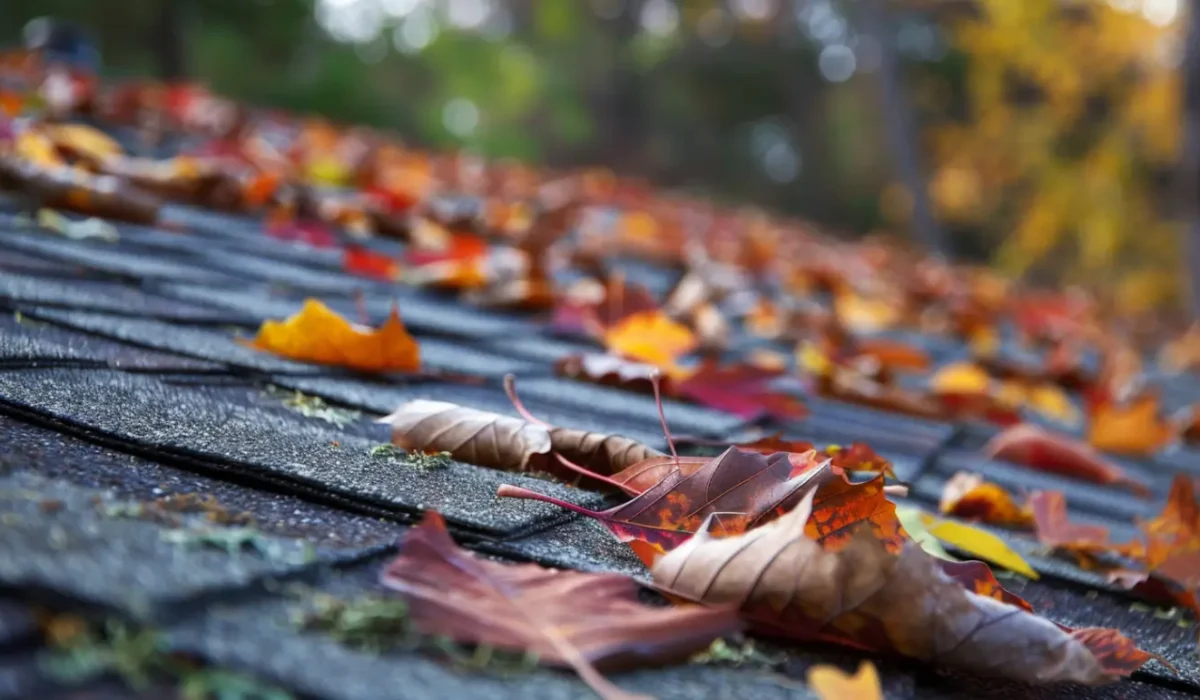When homeowners think about roof damage, they often imagine hail, heavy rain, or falling branches. But one of the most underestimated threats to your roofing system is something far more common — leaves. Yes, those innocent-looking fall foliage piles can cause serious long-term damage to your roof if left unmanaged. For residents in Keller, TX, where seasonal changes bring waves of leaf fall, understanding how leaf buildup can harm your roof is key to avoiding costly repairs and extending your roof’s life.
Let’s explore why leaf damage poses a hidden threat and what steps you can take to protect your home.
How Leaves Damage Your Roof
At first glance, a few leaves scattered across your roof might not seem like a big deal. But when leaves begin to accumulate — especially in roof valleys, around chimneys, or in gutters — they can create a range of problems:
1. Moisture Retention and Rot
Wet leaves can form thick, compact layers that trap moisture against the roofing surface. When this happens, your shingles can’t dry out properly. Prolonged moisture exposure leads to:
- Shingle deterioration
- Mold and mildew growth
- Roof deck rot beneath the shingles
- Compromised sealants and flashing
In humid climates like Keller, TX, where moisture lingers longer after storms or dew-heavy mornings, this trapped water can do extensive damage in a short period of time.
2. Gutter Clogs and Overflow
Your gutter system plays a crucial role in diverting water off your roof and away from your foundation. When leaves accumulate in your gutters, they cause clogs that prevent water from flowing properly. This leads to:
- Overflowing water running down siding
- Soaked fascia boards and soffits
- Erosion around the foundation
- Water backflow under the roofline, potentially causing interior leaks
A clogged gutter is more than a nuisance — it’s a direct path to both roof and home damage.
3. Increased Roof Load
When wet leaves accumulate and remain on your roof, especially during fall and winter, the additional weight can strain the roofing structure. If your roof already has weak points or prior storm damage, that extra load could push it to failure.
Piles of wet leaves can also lead to ice dam formation in colder months, as water gets trapped and freezes, lifting shingles and creating leak pathways.
Where Leaf Damage Is Most Likely to Occur
Certain areas of your roof are more vulnerable to leaf buildup:
- Roof valleys where two slopes meet
- Around chimneys or skylights
- Behind dormers
- Low-pitch areas where water and debris collect
- Inside gutters and downspouts
These zones should be checked more frequently and cleaned regularly to prevent buildup and related damage.
What You Can Do to Prevent Leaf Damage
Fortunately, preventing leaf damage is relatively simple with the right maintenance habits:
Schedule Regular Roof Cleanings
Make it a habit to clean off your roof and gutters at least twice a year — typically in the spring and fall. In Keller, where tree cover is common, you may need to do this more frequently during peak shedding seasons. Use a soft broom or leaf blower to remove leaves from the roof surface. Avoid pressure washers or harsh tools that can damage shingles.
Install Gutter Guards
Gutter guards are a smart investment for long-term protection. They allow water to pass through while keeping leaves and larger debris out. This helps maintain proper drainage and reduces the frequency of cleanings.
Trim Overhanging Branches
If trees surround your home, consider trimming back branches that extend over your roof. Not only will this reduce the number of leaves falling onto your home, but it also minimizes the risk of falling limbs during storms.
Schedule a Professional Roof Inspection
Not all leaf damage is visible to the untrained eye. If your roof has already experienced moisture retention or if you’ve had clogged gutters for an extended period, a professional inspection is recommended.
KangaRoof, serving Keller, TX, offers expert inspections and can help you spot leaf-related issues early. With certifications like Owens Corning Preferred Contractor and CertainTeed Master Shingle Applicator, their team ensures that your roof remains healthy and damage-free through every season.
What to Do if Leaf Damage Has Already Occurred
If you notice any of the following, it’s time to take action:
- Sagging gutters or soffits
- Water stains on interior ceilings or walls
- Rotting fascia boards
- Moss or algae growth in roof valleys
- Visible mold or mildew around the attic
A roofing professional can assess the extent of the damage and recommend repairs. In some cases, water-damaged decking or underlayment may need replacement. If the damage is extensive, your homeowners insurance may cover some of the costs—especially if the roof was otherwise maintained.
Final Thoughts
Leaves may be harmless in appearance, but when it comes to your roof, they can quietly create major problems. With a little seasonal upkeep and attention to vulnerable areas, you can protect your home from the hidden dangers of leaf damage.
Read also our blog: How Texas Roofers Make Insurance Claims Easier
